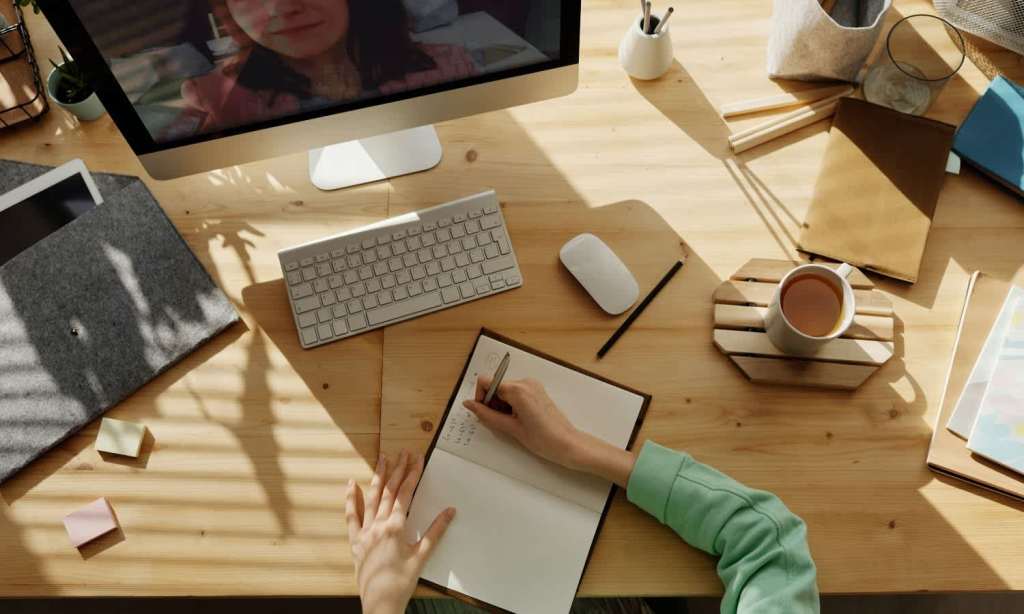We don’t really have to tell you what last year brought — and is technically, still bringing. You know it, you lived it. But as we’re well into the new year (seriously, how is it March already?), change is a-coming. There are vaccines rolling out. We’re being encouraged to dine & discover. And we’re truly beginning to discover what effect 2020 had on us. The government is looking into our mental health. Stanford is looking at our Zoom fatigue.
Yep, that’s right. The platform that connected us all last year, in our personal lives and in our work ones — we’re fatigued of it. From news fatigue to Zoom fatigue. And, as the study found out, there are four different types of fatigue — or, to put it more simply, there are four reasons why we’re sick of it.
Zoom Fatigue Type 1: Fight or Flight
Yep, it seems that Zoom makes our survival instincts kick right in. The grid of small faces on your screen? Jeremy Bailenson, Stanford communications professor, says it simulates an encounter where you’re faced with a confrontation in a small space. You know, like in an elevator — where you divert your eyes to the ground or just stare straight ahead…avoiding close confrontation.
Zoom, however? It “smothers everyone with gaze” — simulating a confrontation, and triggering those survival instincts.
Zoom Fatigue Type 2: Non-Verbal Cues
Ever been forced to overhear a roommate or partner’s Zoom call, because they’re just talking so damn loudly? Yeah, it’s a thing.
The study says we actually speak 15% louder when interacting on video, in comparison to in-person interactions — we’re not used to socialising like this, we suck at picking up virtual non-verbal cues, and we feel distant. Thus, we overcompensate.
Zoom Fatigue Type 3: Constant Self-Evaluation
Because of Zoom, we’re seeing ourselves reflected back a lot…and we stare at ourselves a lot. It’s not because you’re a narcissist (not that we know of, anyway), it legitimately happens every Zoom call.
And this constant self-evaluation can stress us right out — women more so.
Zoom Fatigue Type 4: Inside The Box
You’ve heard of thinking outside the box…well, Zoom is preventing that. We’re stuck inside a small box on the screen, limiting our mental ability — we don’t move. And this lack of movement causes our minds to act differently. The study explains that people who are walking come up with more creative ideas than those who sit.
If you’re suffering from one of these specific Zoom fatigue types — or even more than one — don’t worry, we’ve got your back. The Latch spoke to Dan Auerbach, organisational psychology consultant with Associated Employee Assistance Providers, to find out how you can combat Zoom fatigue.
The first thing he suggests is to “make sure to build in breaks between meetings.” Aim for 15 minutes every hour, and “ideally more” between face-to-face interactions. Auerbach also suggests turning off your own camera image if you’re using Zoom. As above, “Watching your own image is another level of processing that takes extra energy.”
If you have to have your camera on, and you’re in a grid of faces (“a very unnatural experience”), Auerbach suggests to “make sure [you] avert your gaze from time to time. He suggests this for one-on-one video meetings also, “allow yourself to gaze away slightly while you’re listening to others speak”.
And his last tip? “Try and schedule calls in a way that spread them out over the day.” Also, remember that not all calls have to be video calls — try building in some regular, old school phone calls, and see if that doesn’t help with your Zoom fatigue.
Read more stories from The Latch and subscribe to our email newsletter.







